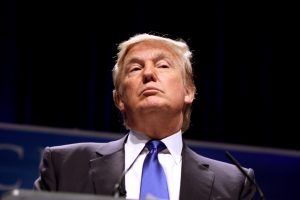U.S.: Trump to withdraw from TPP "on day one" in office

U.S. President-elect Donald Trump has announced the country will withdraw from the Trans-Pacific Partnership (TPP) on his first day in the White House. 
In a video message, he said the regional trade deal involving 12 countries that together cover 40% of the world's economy was a 'potential disaster' for the U.S.
The TPP was agreed in 2015 by nations including the U.S., Japan, Malaysia, Australia, New Zealand, Canada and Mexico, but has not yet been ratified by the individual countries.
The signing was welcomed by many in the U.S. fruit and vegetable industry.
Announcing the plan to pull out of the TPP, he said that the U.S. would "negotiate fair, bilateral trade deals that bring jobs and industry back onto American shores".
Political leaders in Asia have reacted strongly to the development, with Japanese Prime Minister Shinzo Abe saying the deal would be "meaningless" without U.S. involvement.
News outlet CNN reported China could potentially 'fill the gap' left by the U.S., highlighting Beijing had been pushing its own trade deals with leaders from around the Pacific.
"The prospect of the U.S. turning inward in its economic strategy means that China has freer rein to become the focal point of regional integration efforts," Mireya Solis, a senior fellow at the Brookings Institution, was quoted as saying.
"The U.S. appears as largely bereft of a constructive economic strategy towards the most dynamic region in the world."
The Beijing-backed plan, the Regional Comprehensive Economic Partnership (RCEP), covers 16 countries. If it succeeds, China would be in a strong position to lead a bigger, more ambitious free trade area in the future, according to CNN.
It added that since Trump won the U.S. election, Beijing had 'stepped up' its efforts to promote its project. Unlike the TPP, China's plan doesn't currently include any countries in the Americas, but Reuters reported other nations like Peru and Chile were being considered.
Solis also suggested the other 11 TPP member countries could pursue the deal without the U.S., arguing they would have more leverage in bilateral negotiations with the U.S. and in regional talks with China.
But in the absence of the huge incentive of the U.S. market, the TPP loses much of its allure.
"While other TPP members could create a parallel agreement without the U.S. and move forward, the economic benefits will be significantly reduced without the U.S. participating," Rajiv Biswas, chief Asia-Pacific economist at IHS Global Insight, was quoted as saying.
"Therefore some TPP member countries may prefer to refocus on the RCEP as an alternative."
Photo: Via Flickr Creative Commons, Gage Skidmore













































